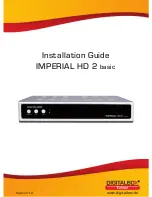
CC2500
SWRS040C
Page 55 of 89
31.2
Frequency
Hopping
and
Multi-
Channel Systems
The 2.400 – 2.4835 GHz band is shared by
many systems both in industrial, office and
home
environments.
It
is
therefore
recommended
to
use
frequency
hopping
spread spectrum (FHSS) or a multi-channel
protocol
because
the
frequency
diversity
makes the system more robust with respect to
interference from other systems operating in
the same frequency band. FHSS also combats
multipath fading.
CC2500
is highly suited for FHSS or multi-
channel systems due to its agile frequency
synthesizer
and
effective
communication
interface. Using the packet handling support
and data buffering is also beneficial in such
systems as these features will significantly
offload the host controller.
Charge pump current, VCO current and VCO
capacitance array calibration data is required
for
each
frequency
when
implementing
frequency hopping for
CC2500
. There are 3
ways of obtaining the calibration data from the
chip:
1) Frequency hopping with calibration for each
hop. The PLL calibration time is approximately
720 µs. The blanking interval between each
frequency hop is then approximately 810 us.
2) Fast frequency hopping without calibration
for each hop can be done by calibrating each
frequency at startup and saving the resulting
FSCAL3
,
FSCAL2
and
FSCAL1
register values
in MCU memory. Between each frequency
hop, the calibration process can then be
replaced by writing the
FSCAL3
,
FSCAL2
and
FSCAL1
register values corresponding to the
next RF frequency. The PLL turn on time is
approximately
90 µs. The blanking interval
between
each
frequency
hop
is
then
approximately
90
us.
The
VCO
current
calibration result is available in
FSCAL2
and is
not dependent on the RF frequency. Neither is
the charge pump current calibration result
available in
FSCAL3
. The same value can
therefore be used for all frequencies.
3) Run calibration on a single frequency at
startup. Next write 0 to
FSCAL3[5:4]
to
disable the charge pump calibration. After
writing to
FSCAL3[5:4]
strobe
SRX
(or
STX
)
with
MCSM0.FS_AUTOCAL
=1 for each new
frequency hop. That is, VCO current and VCO
capacitance calibration is done but not charge
pump current calibration. When charge pump
current calibration is disabled the calibration
time is reduced from approximately 720 µs to
approximately 150 µs. The blanking interval
between
each
frequency
hop
is
then
approximately 240 us
There is a trade off between blanking time and
memory space needed for storing calibration
data in non-volatile memory. Solution 2) above
gives
the
shortest
blanking
interval,
but
requires
more
memory
space
to
store
calibration
values.
Solution
3)
gives
approximately 570 µs smaller blanking interval
than solution 1).
31.3
Wideband Modulation not Using
Spread Spectrum
Digital modulation systems under FCC part
15.247 includes 2-FSK and GFSK modulation.
A maximum peak output power of 1 W (+30
dBm) is allowed if the 6 dB bandwidth of the
modulated
signal
exceeds
500
kHz.
In
addition, the peak power spectral density
conducted to the antenna shall not be greater
than +8 dBm in any 3 kHz band.
Operating
at
high
data
rates
and
high
frequency separation, the
CC2500
is suited for
systems
targeting
compliance
with
digital
modulation systems as defined by FCC part
15.247. An external power amplifier is needed
to increase the output above +1 dBm.
31.4
Data Burst Transmissions
The high maximum data rate of
CC2500
opens
up for burst transmissions. A low average data
rate link (e.g. 10 kBaud), can be realized using
a higher over-the-air data rate. Buffering the
data and transmitting in bursts at high data
rate (e.g. 500 kBaud) will reduce the time in
active mode, and hence also reduce the
average
current
consumption
significantly.
Reducing the time in active mode will reduce
the likelihood of collisions with other systems,
e.g. WLAN.
31.5
Continuous Transmissions
In data streaming applications the
CC2500
opens up for continuous transmissions at 500
kBaud effective data rate. As the modulation is
done with a closed loop PLL, there is no
limitation in the length of a transmission.
(Open
loop
modulation
used
in
some
transceivers
often
prevents
this
kind
of
continuous data streaming and reduces the
effective data rate.)
Содержание CC2500
Страница 91: ...PACKAGE OPTION ADDENDUM www ti com 6 Feb 2020 Addendum Page 2 ...
Страница 94: ......
Страница 95: ......
















































